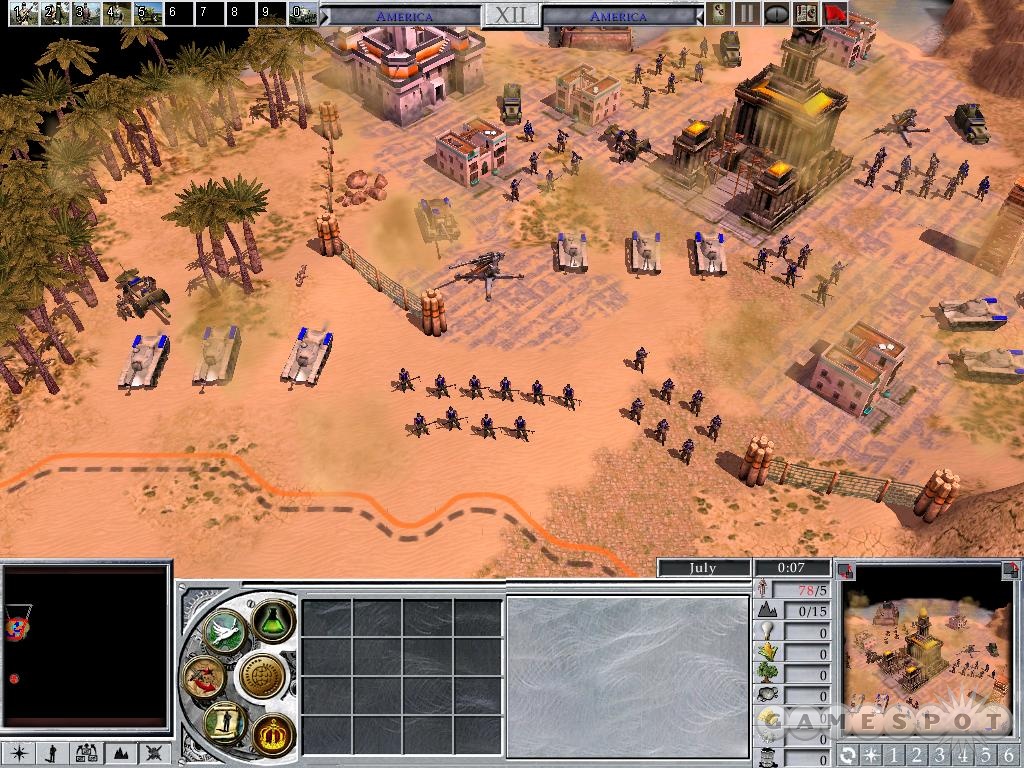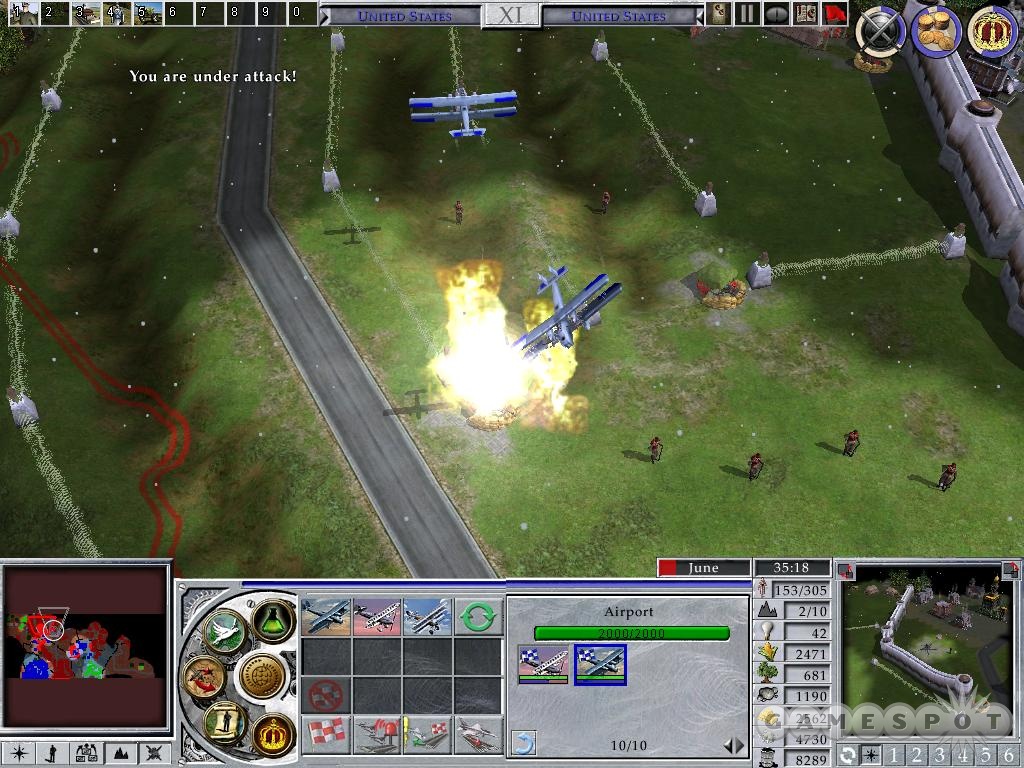Empire Earth II Hands-On - Single-Player Campaign
Work on Empire Earth II is due to wrap up soon, and we take one final look at the game in development.
With Empire Earth II scheduled to ship later this month, work on the game is all but done. Still, we managed to get one last look at this real-time strategy game before development wraps up. Though we've had a chance to check out the various aspects of the game before, this time we managed to play through more of the game's three main campaigns and skirmish mode for a better idea of what the single-player gameplay will be like.
Empire Earth II is very much a traditional, big-scale real-time strategy game. If you played the original game, then you already know what's involved. But if you didn't, here is the gist: Empire Earth II will let you guide a civilization from the dawn of history to the near-distant future in a single game. This means that you'll start in the Stone Age, gather resources, construct cities, and research advances to propel your civilization forward through history. At least, that's the case if you play the traditional skirmish mode against the computer or human opponents.

The game will also ship with three single-player campaigns, each based on a different civilization and era. The first campaign is centered on ancient Korean history and deals with the unification of the Korean peninsula. The second focuses on the formation of modern Germany, from the days of the Holy Roman Empire (which, as one famous historian quipped, was neither holy, nor Roman, nor much of an empire) to the Franco-Prussian War. And the third campaign is about the rise of the United States as a global power, starting from the Spanish-American War and projecting decades into the future.
Each campaign contains eight missions, depicting major events and battles along the campaign timeline. For example, the American campaign starts with Teddy Roosevelt's famous charge up San Juan Hill and the mopping up of Spanish forces in Cuba. The next mission is set during World War I, where American doughboys have to help repulse the last great German offensive of the war. These two missions unfold in a way typical of most campaign missions: you start on a huge map with a small force and must take and conquer a province. In some cases, you can start building fortifications and other buildings to churn out new units. In other cases, reinforcements will arrive after you complete objectives, such as seizing an important town. These are large missions, and there are multiple objectives on each map, which you unlock one by one. And, in general, the campaign missions are fairly scripted, with just enough hand-holding to get you through one objective to the next.
If you want a more conventional, free-form game, then the skirmish mode will likely cater to your tastes. The skirmish options are fairly standard for the genre. You can choose from a variety of options, such as map size and type, how many opponents, game type, and more. The one thing that we discovered fairly quickly was that even at the default "medium" settings, the artificial intelligence was fairly aggressive, and it overran us easily each game. Even on the next easiest difficulty setting, the AI was more of a handful. In general, it likes to swamp you with numbers, and it's good at figuring out where you're defenses are thin. All in all, it's fairly impressive, especially for a supposedly non-cheating AI.
The key to succeeding in a skirmish match is to expand aggressively, taking as many territories as possible early on and then building them up. This is important since you can only build one university and temple on each territory, and these are the only buildings that generate tech points, which are used to purchase science upgrades and to level up to the next age. The more universities and temples that you have staffed, the faster you can advance through the major eras of world history. So even if you have a small fighting force, it can remain potent as long as you can keep upgrading your technology.

It's also fairly important to form strategic alliances early on, and the AI is fairly good about giving you a potential partner. If you can make a neighbor an ally, you can focus your defenses on other borders, and then you have someone who can ride to the rescue in case you come under assault. Plus, it helps to even the odds, as enemy factions can and will ally together against you, which means you'll be on the short end of the stick if you're on your own.
The near-final version of the game that we played appears to be fairly bug-free, which is a good sign. Developer Mad Doc has spent the last few months working to balance and polish the game, and it looks to have paid off. Empire Earth II feels like a faithful follow-up to the original, and we should see the game ship by the end of the month.
Got a news tip or want to contact us directly? Email news@gamespot.com
Join the conversation